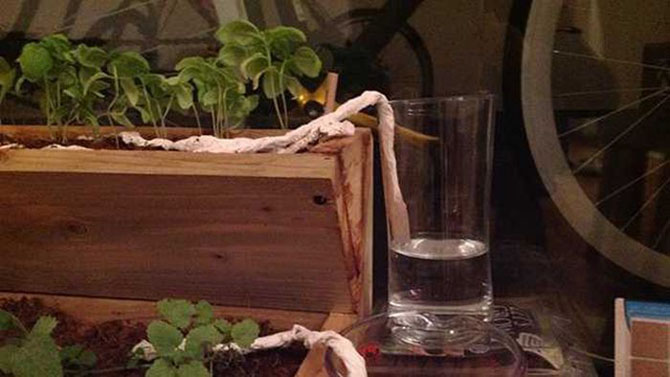The specificity of our climate is such that the cultivation of some garden crops in open ground sometimes turns into a big problem. Insufficient heating of the soil, although according to the calendar it is already the last spring month; return frosts, which even in May are far from uncommon - all this (and ...
The soil in any area where any crops grow is gradually depleted. In practice, this means that the percentage of certain chemical elements... Therefore, fertilizing the soil is a mandatory agrotechnical measure carried out throughout the season. The only difference is ...
The specificity of our climate is such (with the exception of the southern regions) that gardeners / gardeners begin to harvest most crops only in the second half of summer. You can speed up the ripening process of the same tomatoes if you grow them in a greenhouse. But does everyone know how to choose ...
Garden strawberry bushes (the correct name for this domesticated version of the culture) is easy to acquire, and they are inexpensive. But to what extent is it expedient if, according to their appearance it is impossible to understand what will be in the beds as a result - the size of the berries, their quantity, taste. Experienced ...
Several years of work at summer cottage changed my life a lot. Most importantly, they brought joy and satisfaction. And what inventors are my colleagues in the garden! I never cease to be amazed! I learned a lot from them and I hope I will learn a lot more. I decided everything garden secrets and tricks, tips for gardeners to collect in one place. I am sure that there are a great many small tricks for gardeners and truck farmers and the page will be constantly updated.
1. Tops of tomatoes from pests
Cut tops of tomatoes (stepchildren, lower leaves) fill with water. Insist for a day. You can spray cruciferous (for example, cabbage, radish, radish, etc.) and pumpkin (cucumbers, zucchini, pumpkins) from various pests with this composition. Another secret - if the tops are allowed to sour, then you will get an excellent top dressing for any crop.
2. How to water onions sown with seeds so that they are healthy
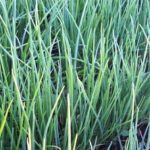
Black onions should be watered not only with water, but alternately, then with a weak ash solution (1 glass of ash per bucket of water), then with a very weak solution of potassium permanganate - all pests disappear - the onion becomes strong, healthy.
3. How to keep carrots until spring?
Just leave one row of carrots untouched. Carefully tear off all the tops, cover the garden bed on top of your palm with earth. In the spring, grab the ground - dig up the carrots. It will be fresh, juicy, delicious!

5.Parsley shoots will appear in three hours
Many of us grow greens for the table on the window or balcony. It is very convenient. Parsley seeds germinate very slowly, but there is one trick to "make" them germinate very quickly. Prepare a container with earth, moisten it, sprinkle the earth quicklime three times every 10-15 minutes. Sow parsley seeds previously soaked in milk. The seeds will sprout in three hours. The room should be warm, not lower than 20 ° C.
6. Iodine for the garden
a) If, when growing seedlings, tomatoes are watered once with a weak iodine solution (one drop of iodine per three liters of water), flower brushes will form faster, will be more branched, and the number of ovaries will increase. Fruits on such tomatoes will be 10-15% larger, ripen a few days earlier. When the seedlings are planted in the ground, then after two weeks the plants can again be watered with iodine water 1 liter under each root (three drops of iodine in a bucket of water).
b) To protect strawberries from gray rot, it is useful to sprinkle the bushes with iodine solution 2-3 times (10 ml per 10 liters of water) at intervals of 10 days.
7 pine needles for pest control
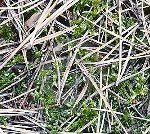
Pine needles can be effectively used in the fight against garden pests. To do this, take 1 kg of needles per 5 liters of water, put in a dark place for a week. Stir the infusion daily in order to extract the necessary substances from the pine needles. Then strain the infusion. Add water to the original volume before spraying. Adding 20 g of liquid soap to 5 liters of infusion increases its effectiveness. The infusion of pine needles should be used against aphids, copperheads.
When you urgently need to prepare an infusion, you can take pine needles, pour boiling water over them in a 1: 1 ratio, leave for 24 hours. Strain, add liquid soap- the preparation is ready. Such a strong infusion should be diluted 1: 5 with water before use. The experience of gardeners has shown that spraying should be carried out in the late afternoon. The effect increases many times over.
According to the norms, the advice is this: for a currant bush - 1.5 liters, for a gooseberry bush - 1 liter, for a raspberry bush - 2 liters, for square meter strawberries - 0.2 liters, per adult tree - 10 liters. Currants and gooseberries are sprayed at the very beginning of flowering in order to prevent the appearance of a moth. Repeat the operation with an interval of 5 days.
An infusion of pine needles helps strawberries against gray rot - this is very important for preserving the harvest. Pine suppresses gray rot during the ripening period of berries, so it is a good idea to mulch strawberry plantings with pine needles.
8. To keep strawberries, strawberries from birds
immediately after flowering, place various small objects painted in bright red color between the plants, similar to ripe berries (for example, walnuts, round pebbles). By the time the berries ripen, curious birds will already understand that they have nothing to do here.
9. How to apply poultry (chicken, pigeon) droppings?
It should be remembered that poultry manure is a very concentrated fertilizer, you cannot overestimate the doses of its use. When digging the soil for 1 sq. m add 500 g of dry bird droppings... When planting plants, it is introduced into holes, nests no more than 8-10 g per plant. Liquid dressings are effective: fresh bird droppings are diluted with water in this ratio - if fresh bird droppings, then 1 kg per 10 liters of water, and if dry, then 1 kg per 20 liters of water. As soon as the bird droppings get wet, mix it well and bring it under the plants without leaving it to ferment. A solution of poultry manure is consumed at 2 liters per 1 sq. m. After the soil near the plant has been watered with this solution, it should be covered with a layer of dry soil of 1 cm and watered with clean water.
10. Burning trash
Burning garden trash in the spring or late autumn is a daunting task for many gardeners. Wet residues do not want to flare up. In this difficult task ... a brick will help. Put it in a dry place first so that it dries well. Submerge dry bricks completely in kerosene for three hours. When it's soaked, wrap it in plastic wrap. Firstly, so that it does not "aromatize" the air, and secondly, this way it will retain its flammable properties longer. When it is necessary to burn the garbage, it is placed inside the prepared heap and set on fire. It burns for a long time and evenly. To then extinguish the flame, the brick is pulled out of the fire with a stick, covered with a wet, dense cloth.
11. How to sow carrots without hassle?

Carrots have very small seeds. Sowing them is very inconvenient - sometimes a lot, sometimes a little falls into the groove of the garden. There is an exit! Take the small medicine bottle. Make in the lid small hole slightly larger than a carrot seed. Put the seeds in a bottle and, with a lid closed, sow on the garden bed, like salt. Highly economical option get it.
12. About tool sharpening
We, gardeners and gardeners, need a good cutting tool: garden knives, shovels, secateurs, axes, hoes, flat cutters, saws. But, alas, it is very rare now to buy a quality instrument. The choppers quickly become blunt and serrated. The shovels bend and break. Our heavy black soil does not withstand all modern tools. But these disadvantages can be easily eliminated by treating them with a weak solution of sodium chloride.
Gardeners have been using hardening and the point of a cutting tool in a solution of sodium chloride for a long time. I learned about this trick, this way of sharpening from my father.
The solution is prepared simply: 1 glass of water + 1 tablespoon of salt. Water temperature matters. If the tool is made of hard and brittle (brittle) steel, then it should be slightly warm - + 28-35 ° С. And if the steel is soft, then the water of the salt solution should be even warmer - + 35-40 ° С. Of course, the volume of the mortar depends on the size of the tool that you will be preparing for sharpening. The tool must be completely submerged in water.
If you are going to harden a new tool with salt, then you must first sharpen it, and then put it in a salty solution for half an hour. After that, it can already be sharpened and directed completely. Rinse the tool periodically in salt water while sharpening. The father is sure that with such a sharpening the tool will not break - the fragility will disappear, solid steel will become more elastic. Moreover, this tool does not dull longer and does not grind down as quickly as when sharpening without using salt water.
13. Treatment of seeds before sowing

Seed treatment with hydrogen peroxide is not a completely new, but rather promising method of disinfecting and preparing seed material for sowing, especially in the absence of potassium permanganate, which is familiar to us, on sale. At the same time, hydrogen peroxide increases the sowing quality of seeds, plant immunity, growth and development rates, and increases the yield.
To improve sowing qualities and stimulate germination, seeds are soaked in a 0.4% solution of hydrogen peroxide for 12 hours, and difficult to germinate, for example, beetroot and parsley seeds, for 24 hours.
For disinfection, the seed is treated in a 10% solution of hydrogen peroxide for 20 minutes at a ratio of the mass of seeds to the solution of 1: 1. Then the seeds are washed with water and dried to the flowability required for sowing.
Soaking the seeds in a 0.4% hydrogen peroxide solution increases the germination energy, accelerates the emergence of seedlings by 2-4 days, increases productivity, and helps to reduce the content of nitrates in products. Treatment of seed with 10% hydrogen peroxide solution reduces the contamination of seeds with pathogens.
Don't be lazy! Treat and disinfect the seeds before sowing with hydrogen peroxide, and the result will not be long in coming.
14. How to protect trees in winter from hares and mice
It turns out that you can do without such time-consuming work as tying the boles of young trees with foil, spruce branches and other materials. The trick is that hares do not tolerate certain odors. For example, the smell of fish oil or stale bacon. Lubricate the trunks with one of these "preparations". There is another way: hang bags of mothballs on the lower branches of the tree.
Even if you're not afraid to get your hands dirty while gardening, having a couple of "aces up your sleeve" is always a good thing. We bring to your attention a few "tricks" that every gardener and gardener should take note of.
Many of our tips may sound strange to you, but rest assured, they really work!
1. Planting "pot in pot"
Not all gardeners like to radically change the design of the site every new season. Of course, you want to change, but usually it takes a lot of time and effort. However, there is one little trick that allows you to swap landing spots whenever you feel like it. Just dig a few plastic pots into the ground and insert seasonal container plants into them. When flowers lose their decorative effect, they can be easily replaced with new ones. So your flower garden will always be beautiful and elegant.
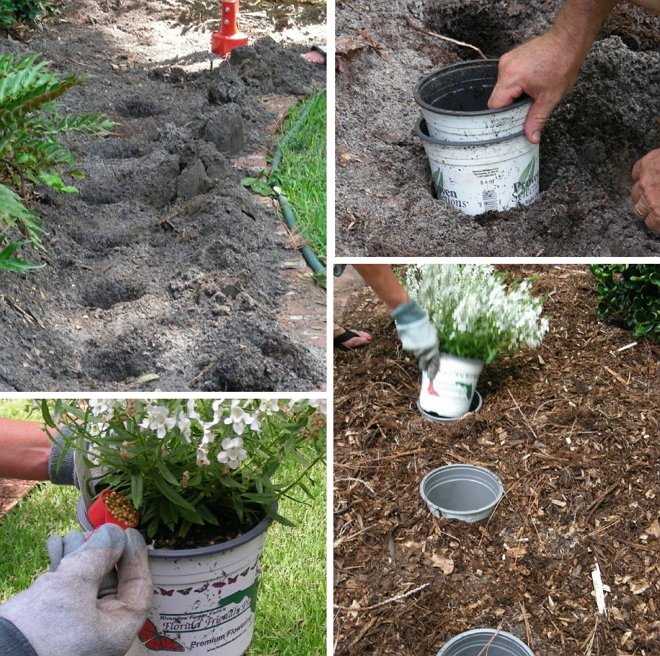
If you have very small plot, this does not mean at all that you cannot grow whatever you want on it. Find a commercially available plastic storage container and plant vegetables or flowers in it. To make the mini-bed not too heavy, you can lay lutrasil on its bottom. By the way, such a project can be implemented even on the balcony of a city apartment.

Many people do not even suspect that diapers are used in floriculture. Meanwhile, creative summer residents came up with the idea of laying them on the bottom. flower pots and pots. The thing is that the material used in diapers retains moisture, but the roots of the plants do not rot at the same time. This growing method is best for annuals that require frequent watering. Now, even if you rarely visit the dacha, you don't have to worry about your favorite plants: they will not die.
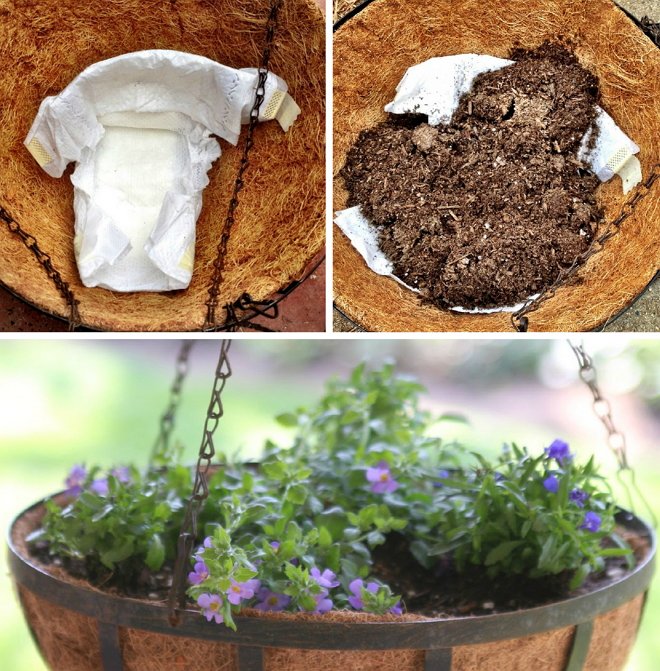
4. Watering with "magic" water
Do not pour out the water in which the vegetables were cooked: this broth is full of nutrients, thanks to which many plants in the garden will grow to the envy of neighbors. Just do not water the flowers with boiling water, wait until the broth has cooled. It is suitable for watering both horticultural crops and potted plants. Drinking "vegetable" water is good for people too. In hot weather, it quenches thirst well. But this is already a matter of taste.
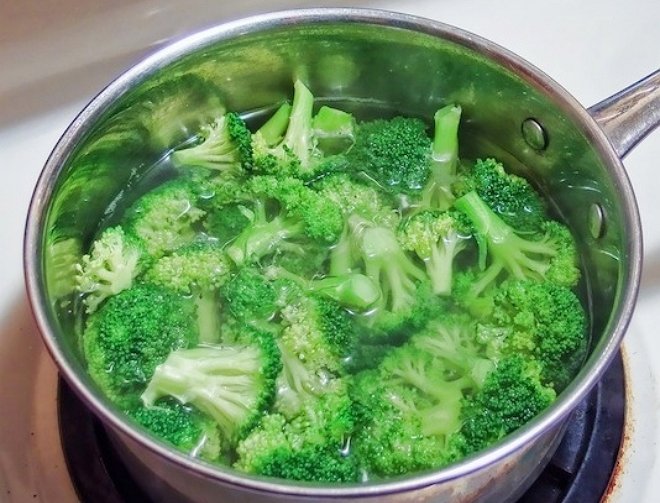
5. Coffee filters for ... flower pots
Each time you water the potted flowers, you may notice that soil spills out from the drainage hole along with the flowing water. Coffee filters placed at the bottom of the pot will allow the liquid to drain away but keep the substrate inside. Brilliant, isn't it? This idea is ideal for indoor plants as well as for an outdoor container garden.
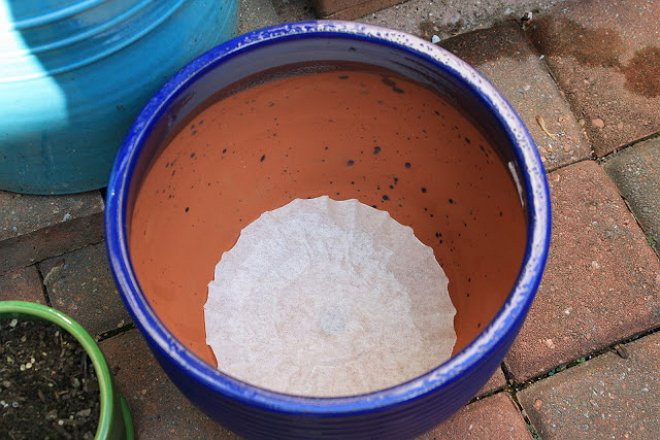
6. A new look at watering
Plants with long roots that go deep into the soil often do not receive moisture even with abundant watering. But this can be easily remedied by digging in an empty plastic container with holes in the bottom next to such crops. By watering your plants through this pot, you can be sure they will get the moisture they need for good and healthy growth. Zucchini will especially like this watering.
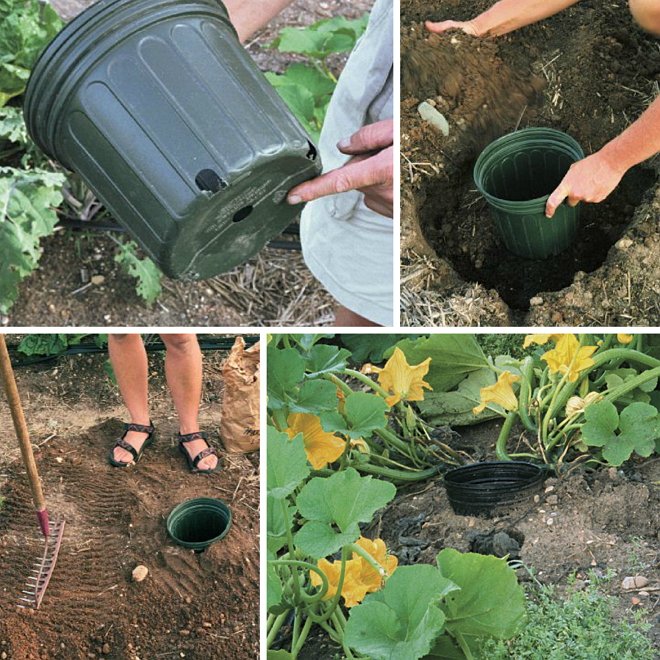
7. If you need a greenhouse for greenery and seedlings ...
In this case, the good old plastic bottles will again help you out. In its own miniature greenhouse, each seedling will develop at an amazing rate. And all you need is to cut off from the usual plastic bottle the neck and cover the pot with the plant with it. Simple and convenient!
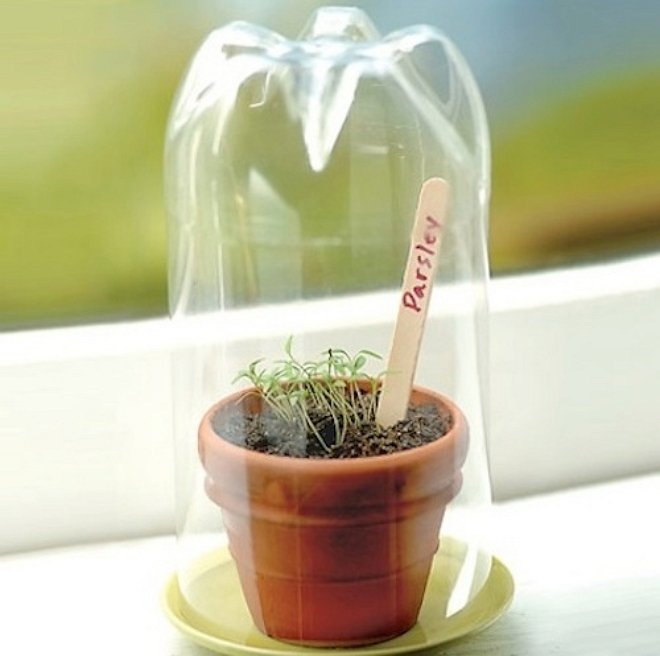
Usually building high beds requires certain skills (especially for women). However, if you have blocks of cinder-concrete with large holes, the task is greatly simplified. With these building stones, you can create a garden bed of any size. What is also important, plants can be planted not only in the center, but also in the holes in the blocks.
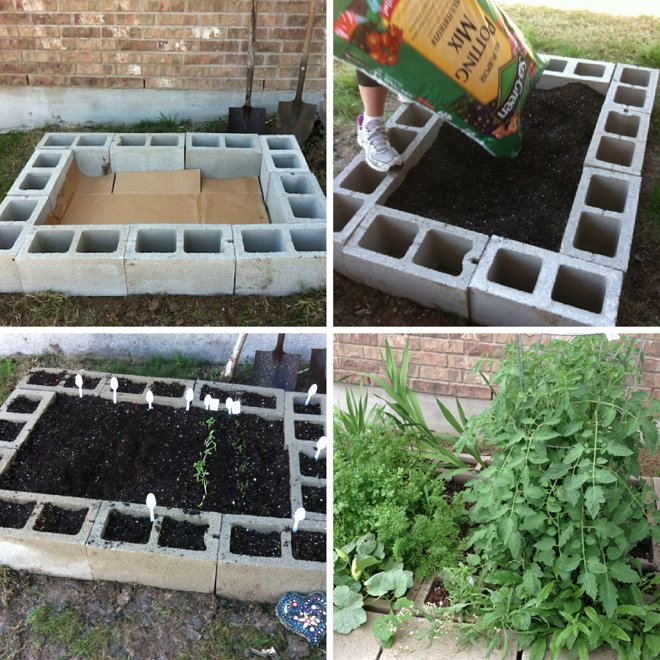
9. Seeds and citruses
Use lemon or orange shells as seedling cups. First, it's cute. Second, the plant will consume nutrients from the citrus peel. Thirdly, this planting method is very budgetary.
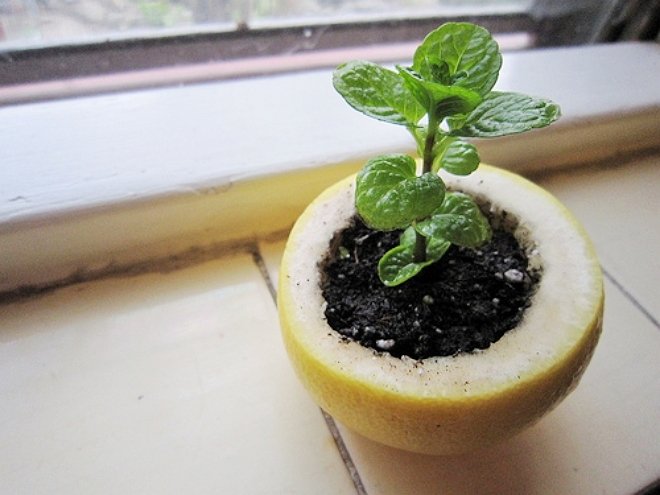
10. Eggshell: not rubbish, but fertilizer
Egg shells always go to the trash can, but should go to the garden. Ground eggshell- an excellent fertilizer that can increase the yield of most garden crops.

Remember, dear summer residents, that everything ingenious is simple, and everything simple is ingenious. And you don't have to reinvent the wheel at all in order to make your life much easier and save money while spending the summer on a suburban area.
You can often see this picture: one Vacation home it is buried in flowers, and on the neighboring plot there seem to be many flowers planted, and the flower beds are well-groomed, and the earth is loosened, but there is no such lush, exuberant flowering that bewitches the eye. What's the secret?
And there are many secrets. Flowers in the country require love and attention, and each plant has its own secret, and sometimes more than one. We will reveal a few little flower secrets so that your summer cottage is always surrounded by a luxuriously blooming garden.
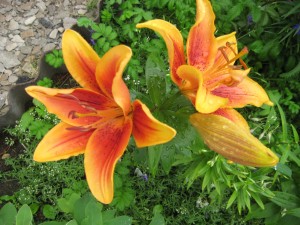 To have peonies to grow large flowers, you need to leave only the central, largest bud on each stem, and remove the rest. And if you do the opposite: pinch off the central bud, - the peony bush will delight you with long flowering.
To have peonies to grow large flowers, you need to leave only the central, largest bud on each stem, and remove the rest. And if you do the opposite: pinch off the central bud, - the peony bush will delight you with long flowering.
To gladioli bloomed longer, they are not planted all at once, but with an interval of 2-3 weeks.
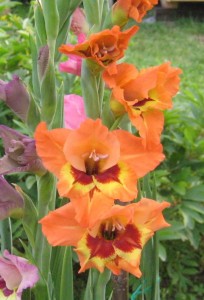 they get sick less often if the soil in which they are planted is poured with an infusion of garlic (50 g of chopped garlic is insisted for a day in a bucket of water).
they get sick less often if the soil in which they are planted is poured with an infusion of garlic (50 g of chopped garlic is insisted for a day in a bucket of water).
To save bulbs flowers (lilies, tulips) from mice and other pests, each bulb must be greased before planting Vishnevsky ointment .
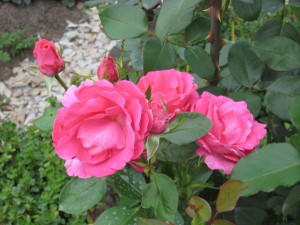 Roses and other plants that are frozen in winter, or suffered from spring frosts, are treated with bread. Pieces of bread - better than rye - are soaked in water overnight, then knead and pour the water and bread into a shallow hole dug out next to the affected flower. The hole is again covered with earth.
Roses and other plants that are frozen in winter, or suffered from spring frosts, are treated with bread. Pieces of bread - better than rye - are soaked in water overnight, then knead and pour the water and bread into a shallow hole dug out next to the affected flower. The hole is again covered with earth.
Finely chopped banana peel, buried at the roots roses, will provide the plant with trace elements and potassium. The flowering will be more abundant, and the flowers themselves will be brighter.
They love fertilization with ash and manure, and they also like loosening the soil around the bush. 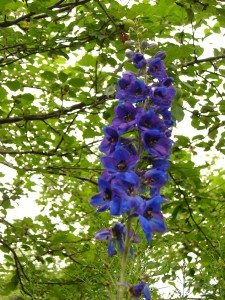 Pruning faded delphiniums promotes their re-flowering in August.
Pruning faded delphiniums promotes their re-flowering in August.
 To phloxes bloomed longer, in May, part of the shoots is cut by 1/2. Then, on the shortened shoots, additional shoots develop, lateral ones, which will bloom after the main ones.
To phloxes bloomed longer, in May, part of the shoots is cut by 1/2. Then, on the shortened shoots, additional shoots develop, lateral ones, which will bloom after the main ones.
Clematis suffer from overheating of the roots. Therefore, the soil under this plant should be shaded. This can be done by planting annual flowers around clematis: nasturtium, alissum, marigolds, etc.
Pinch off faded ones during the summer. rose flowers... But in August, stop these pinching, let the ovaries ripen. This will help the roses prepare for winter.
Lilies, phlox, astilbe, daisies and violets can be transplanted in full bloom.
Feed with fertilizers all flower plants better more often, but with a solution of weak concentration. Such feeding should be done in the evening or on a cloudy day.
Carnations, heucheras, cereals, primroses, perennial asters for the winter do not cut .
- Gladiolus babies and young bulbs do not like growing next to mature bulbs, which inhibit their growth. Therefore, it is better to plant the bulbs by parsing: adults - separately, children - separately, medium-sized onions - separately.
- Observe the crop rotation when planting gladioli : in one place, these flowers can grow no more than 2-3 years; then they start to hurt.

- Aquilegia it is not recommended to grow in one place for more than 3-4 years: the bushes fall apart and lose their decorative effect. It is better to replace old plants with young seedlings. Every spring, under the aquilegia bush, you need to add half a bucket of fertile soil or humus.
- - the plant is frost-resistant. But its rhizomes often grow upward, and then they should be covered with spruce branches or straw for the winter. Otherwise, a frosty and little snow winter can destroy even unpretentious astilbe.
- If on phlox characteristic narrow, ribbon-like leaves appeared - this is a sign of damage to the plant by a pest - phlox nematode. If you see such leaves on phloxes, you need to dig up diseased plants and destroy (burn). For 3 years, phloxes, as well as primroses and gypsophila, cannot be planted in the vacant space.
- To calendula bloomed for a long time, it needs to be pruned after the first wave of flowering subsided (shorten the plants to 10-12 cm). Then lateral shoots will develop, which will give many new, bright inflorescences. Flowering will continue until autumn frosts. The same pruning can be done in dry summers, when calendula flowers become smaller and the color of flowers and leaves fades. Water the plants well before the "rejuvenation" procedure.
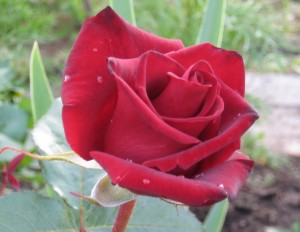
- Treelike hydrangea it is useful to water once a month with a pale pink solution of potassium permanganate - this strengthens the tissues of the plant and the huge caps of flowers do not droop so much.
- Pruning in autumn roses, do not throw thorny twigs away. They can be divided into parts and stuck often enough where lilies are planted. Thus, the bulbs of lilies will be protected from being eaten by mice - mice do not like to make paths among the thorns! On top of the pruning of pink branches, you can fall asleep with leaves and cover with a film - the dry wintering, which they love so much, will be provided to the lilies. In the spring, do not immediately pull out the cuttings of roses, watch - some of them may take root, and you will get a new rose bush.
- Against fungal diseases it is very useful to process flowers, as well as garden strawberries, with a pharmacy tincture of propolis: a bottle (50 ml) for a bucket of water. For example, against black spot of roses, you need to spray their leaves with such a diluted propolis tincture up to 4 times per season, especially in a rainy summer.
- To be on the bush asters larger flowers have formed, the topmost bud is pinched off, leaving the 2nd from the top. Of course, in order for asters to bloom magnificently, they need to be fed. Asters take ash especially well as fertilizer. It's great if this
This post contains several useful tips that will help enthusiastic gardeners create their own little paradise at the dacha.
1. Want to grow sweet tomatoes? Use baking soda!
Sprinkle the soil around the tomatoes with the solution baking soda once a week. It can be an excellent fertilizer due to its property of neutralizing the soil.

2. Don't like non-ecological plastic flower pots? Make your own with toilet paper cardboard!
Make a few slots on the cardboard roll from toilet paper so that it can be folded easily. Then it remains only to pour soil there and plant seeds.
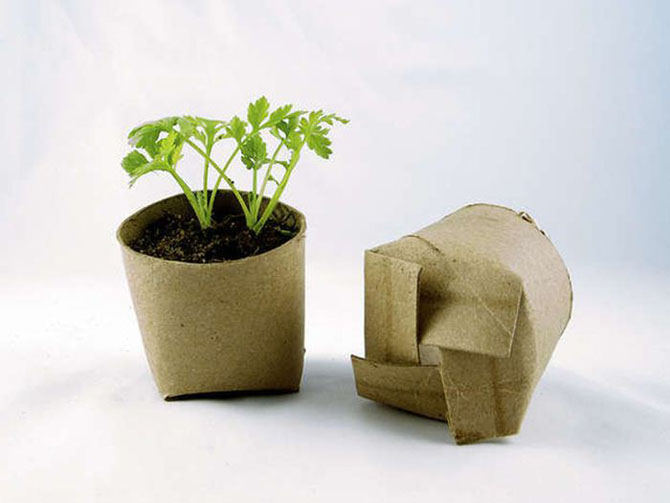
3. Have you defeated the slugs in the garden? Beer will come to your aid!
Leave a saucer filled with beer, preferably dark, overnight in areas where slugs tend to accumulate more. They are big lovers of this drink, and after such a feast they quickly die.
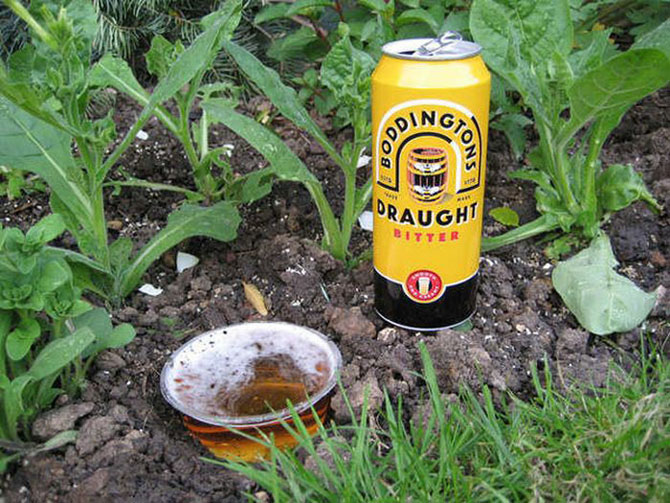
4. Grow celery at home
Trim the stalks from store-bought celery and place the remaining stalk in a small container of baking soda. Place the herring where it will fall sunlight... When fresh leaves begin to sprout in the center of celery, and roots are below, then it's time to plant it in the ground.

5. Filter for a flower pot
Place a paper coffee filter on the bottom of the pot before filling the pot with soil. It will keep soil out of the drainage holes in the pot and create dirt.
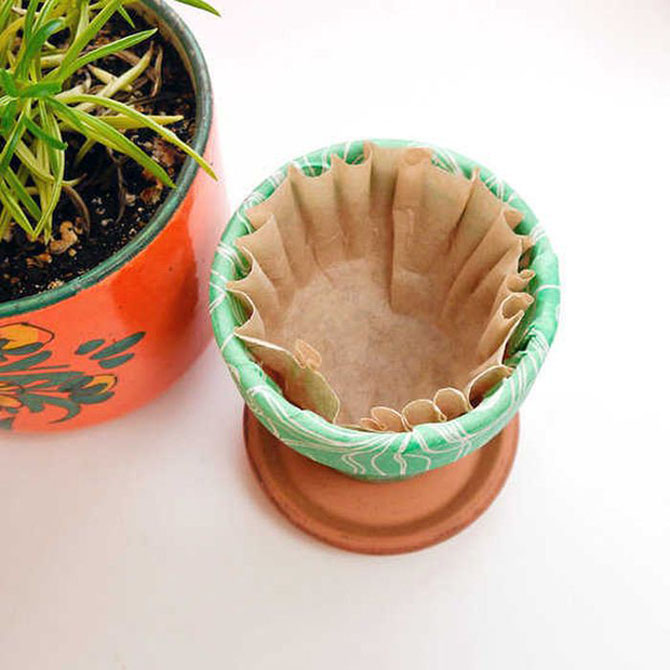
6. Ground coffee will fertilize the soil and repel insects
When the plant has passed the germination phase, sprinkle coffee pomace on the soil.
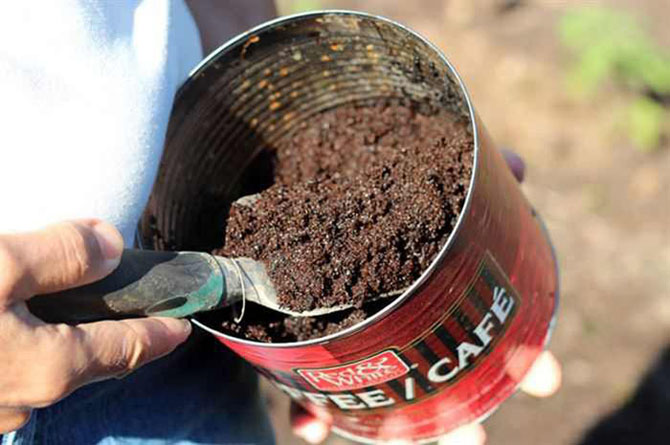
7. Store your garden tools in the sand to prevent rusting.
To help you keep your garden tools longer, store them in a bucket of sand.

8. The paper towel will provide the plant with constant watering.
If you do not have the opportunity to water your seedlings for some time, then roll paper towel, dip one end of which in a glass of water, and spread the rest on the ground around the plants.
